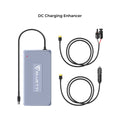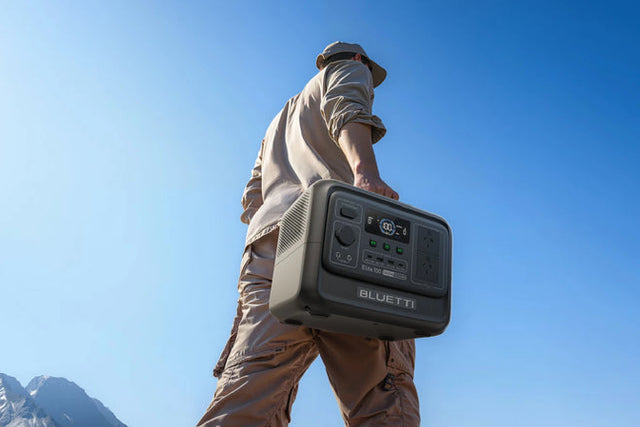In the vast expanse of the Australian outback, where nature reigns supreme, understanding the nuances of energy can be a game-changer for those venturing into untouched territories. Whether you're setting up a sustainable home or powering your next big adventure, knowing the key differences between AC and DC power can make all the difference. Like how the right solar panels can extend your power station's efficiency, grasping these fundamental contrasts ensures you're equipped for any scenario. Imagine running your remote eco-retreat with optimal energy management or simply keeping your devices charged for those epic sunset captures—master the art of power, and the wild is your oyster.
The Key Differences Between AC and DC Power
For those venturing into the world of electrical current, understanding the distinction between AC and DC power is essential. This knowledge empowers users to harness electricity's full potential, whether planning an urban project or setting up a rural outpost.
What Defines AC and DC Electricity?
Alternating Current (AC): This type of electrical current is known for its ability to change direction periodically. Picture it like the ebb and flow of ocean waves—constant yet ever-changing. This characteristic makes AC the primary choice for delivering electricity over long distances across Australia's vast landscapes. Factories and homes thrive on AC electricity, as it can be easily transformed to higher or lower voltages, optimizing power efficiency.
Direct Current (DC): On the other hand, DC power flows like a steady river, consistently going in one direction. It embodies reliability, a trait treasured in the precision-driven world of modern electronic devices. Solar panels, battery systems, and countless gadgets align with DC power's steady pulse, ensuring they perform with precision and integrity. The consistent nature of DC electricity makes it an ideal candidate for sustainable energy solutions—perfect for those who dream of a self-reliant future, free from the grid.

The Key Differences Between AC and DC Power
For true energy enthusiasts intrigued by the dynamics of electricity, the distinction between AC (alternating current) and DC (direct current) is essential. Both forms of power have their unique applications and advantages, and understanding these helps in appreciating the intricacies of our modern electrical grids.
Why is AC Often Used for Power Distribution?
Easiest to change voltage levels with alternating current, the reason it’s favored for power distribution is, because step-up or step-down transformers can directly interact with it. This means AC can easily head into homes at lower voltages after being transmitted long distances at high voltages, ensuring both efficiency and safety for household electronics.
Transporting electricity over vast distances? Alternating current shines. Because of its ability to be transformed, AC travels with much less energy loss. It’s the backbone of our electric grids, especially in expansive regions like Australia where distances between power generation sites and urban centres can be substantial.
Curious about the electronics in your smartphone or in your car? These mostly rely on DC power for precise, stable energy requirements. Yet when it comes down to powering cities or reaching remote locales, AC swoops in, transforming with seamless precision. Equip yourself with this knowledge, and you’re ready to unlock the mysteries of electricity. Streamlining energy transformations? That’s AC's game.

Where is DC Primarily Used and Why?
For those exploring the intricacies of electrical currents, understanding the role of Direct Current (DC) is essential. DC power is a staple in the operation of solar panels, batteries, and a myriad of electronic devices that crave a stable and unwavering power supply. Designed for efficiency, DC power seamlessly integrates into systems where reliability is not just an option, but a necessity.
Think of the solar panels on rooftops, converting sunlight into usable energy. DC is their lifeblood, ensuring that the energy produced is steady and consistent, perfect for charging batteries and powering devices without interruption. Imagine your daily devices — phones, laptops, or even LED lights in your camper van — all thriving on the consistent energy flow that DC provides, much like the tenacity of an off-the-grid adventurer who harnesses every beam of sunlight.
In a world constantly in motion, where devices travel from one socket to the next, DC offers a different kind of freedom. With less energy waste and more precision, it powers the technology that keeps us connected, no matter where our journeys take us. Much like a wanderer traversing the wild, DC maintains a silent commitment to reliability and efficiency, empowering your gadgets to perform their best, every single minute.
The Key Differences Between AC and DC Power
Ever wondered what truly sets apart AC and DC power? These two forms of electricity have puzzled curious minds for ages, yet knowing their distinctions can empower our everyday energy choices. Let's embark on a journey into the electrifying world of alternating and direct current, and explore the magic behind conversion devices that enable seamless transitions between the two.
How Do Conversion Devices Work for AC and DC?
Delve into the transformative processes of energy conversion, where devices serve as bridges between AC and DC landscapes. Unravel the potential of inverters, true game-changers that metamorphose DC into AC. When we tap into the majesty of solar panels or batteries, we harness the direct current. Inverters step in, converting this steady flow into the alternating current that powers our homes, illuminating our evenings and charging our gadgets.
Shifting gears to the robust realm of rectifiers, whose role is nothing short of pivotal – the reverse engineers that convert AC to DC. As we access power from the grid, alternating current is predominant. However, our electronic devices thirst for the steady, unwavering flow that only direct current can quench. Rectifiers take the helm, expertly performing the conversion that fuels our tech-centric lives from tiny smartphones to massive factory machines.
Immerse yourself in the functionality of these conversion devices and witness the brilliance of how they orchestrate the interplay between AC and DC. With an understanding of these mechanisms, we gain the power to choose wisely in our technology-driven world. As we venture into this domain of energy transitions, the adventure beckons with every switch, every device, and every power source we embrace.

The Key Differences Between AC and DC Power
For those venturing into the realm of electrical mysteries, understanding the distinctions between AC (Alternating Current) and DC (Direct Current) power unveils a landscape of choices each with its own merits and challenges. AC power reigns supreme when it comes to the efficient transmission of electricity across vast distances, albeit with a caveat: its potential lethality at higher voltages requires careful handling. Think of modern power grids and your home's electrical supply. On the flip side, DC power offers a haven of stability, unrivaled in its efficiency for electronic devices and battery systems. However, its rigidity presents a hurdle when converting to different voltage levels.
Pros and Cons of AC and DC
The AC wave is your trusted ally for electrical distribution, its alternating currents expertly navigating the infrastructure that powers our daily lives. Yet, this convenience tags along with an inherent risk factor at elevated voltages, demanding respect and precaution. Meanwhile, DC stands as the steadfast companion in the realm of electronics, where its unwavering flow ensures reliability. Nonetheless, this stability is offset by the challenges posed in voltage conversion—imagine the technological dance required to morph it for varying applications.
The Core Differences
| Characteristics | Applications | Advantages | Disadvantages |
|---|---|---|---|
| AC: Alternating Current | Power transmission, household electricity | Efficient for long-distance transmission, easy voltage transformation | Increased danger at high voltages |
| DC: Direct Current | Electronics, batteries, solar power systems | Stable for electronics, efficient use in low-power devices | Complex voltage conversion, less effective for long-distance transmission |
Embark on this electrifying journey with a newfound appreciation for the power dynamics at play, whether sparking your curiosity or empowering your next outdoor adventure—where AC and DC currents converge to illuminate possibilities and inspire innovation. From the urban expanse to the heart of the wilderness, the key differences between AC and DC power lay the foundation for informed exploration and innovation, no matter where you land on the grid.
Embarking on a deep dive into the distinction between AC and DC power is just the start of your energy adventure. For those ready to embrace Australia's rugged wilderness or simply go off-grid, the BLUETTI AC300+B300K is your ultimate power companion. With a commanding 3,000W AC Output, it effortlessly handles a vast array of appliances. Thanks to the B300K's formidable 2,764.8Wh capacity—expandable up to a staggering 11,059.2Wh—you can tailor your energy reserves to meet every adventure’s demands. Seamless connectivity is ensured by a variety of ports, including USB-A, USB-C, and multiple AC/DC outputs. What truly sets the BLUETTI AC300+B300K apart is its ability to harness the sun's power, supporting up to 2,400W solar input for maximising renewable energy usage. Ready to redefine your energy understanding and equip yourself with the power of the future?












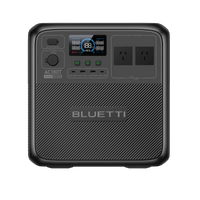












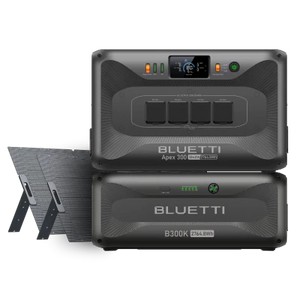





















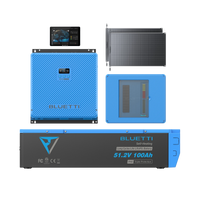





















![[Phased Out] BLUETTI B80P Expansion Battery | 806Wh](http://www.bluettipower.com.au/cdn/shop/files/202310025B80P_2000-2000px_4_4caa0c1c-4dab-4272-9e9b-2b7507e5bd81.jpg?v=1713777870&width=200)
![[Phased Out] BLUETTI B210P Expansion Battery | 2,150Wh](http://www.bluettipower.com.au/cdn/shop/files/2_08cf9ef3-03a4-4489-b641-d3edb8094896.webp?v=1716016566&width=200)
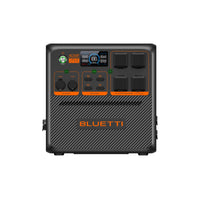


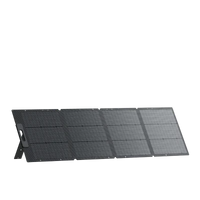


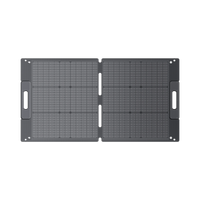





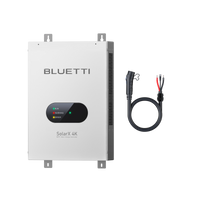






















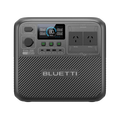

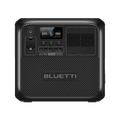






























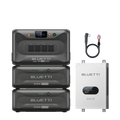



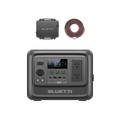





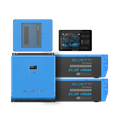



































![[Phased Out] BLUETTI B80P Expansion Battery | 806Wh](http://www.bluettipower.com.au/cdn/shop/files/202310025B80P_2000-2000px_4_4caa0c1c-4dab-4272-9e9b-2b7507e5bd81.jpg?v=1713777870&width=120)
![[Phased Out] BLUETTI B210P Expansion Battery | 2,150Wh](http://www.bluettipower.com.au/cdn/shop/files/2_08cf9ef3-03a4-4489-b641-d3edb8094896.webp?v=1716016566&width=120)


















